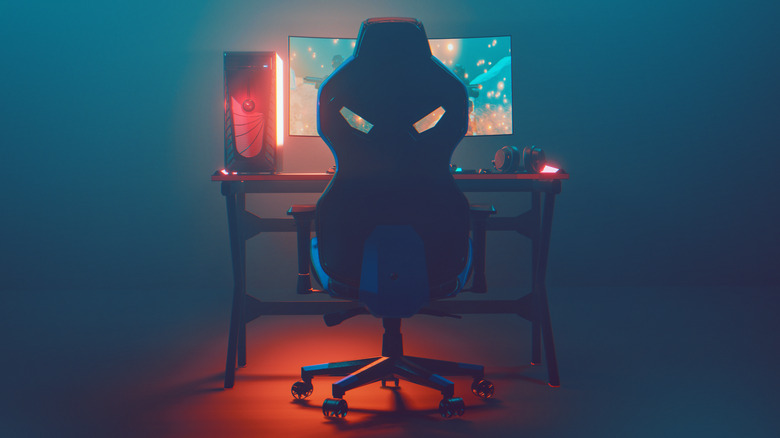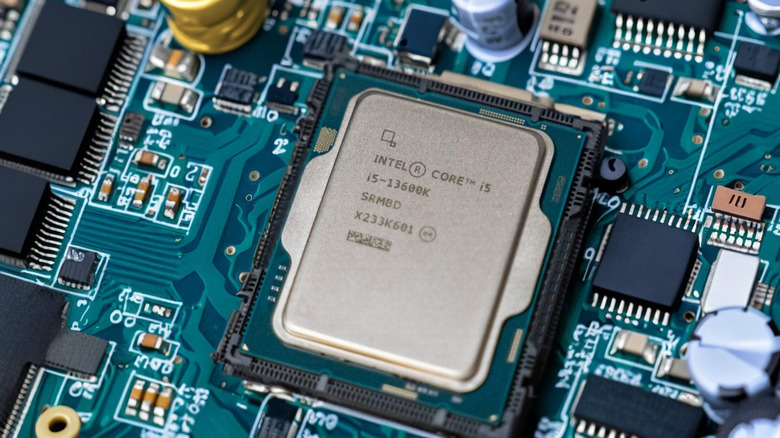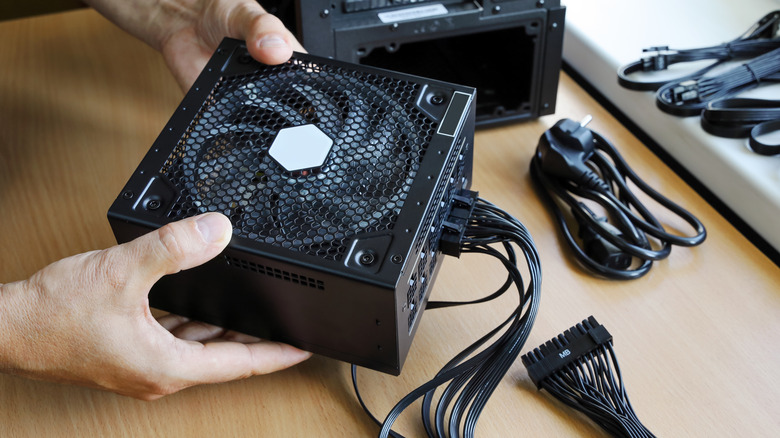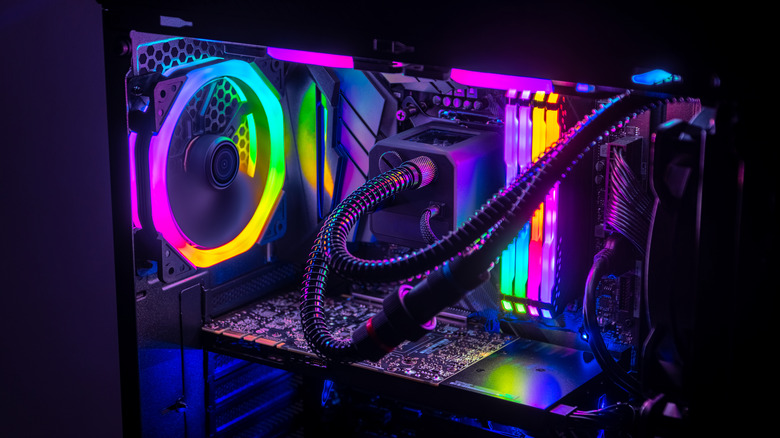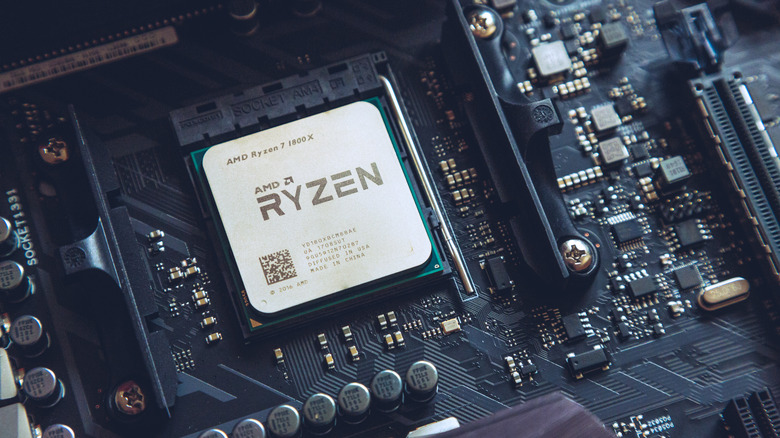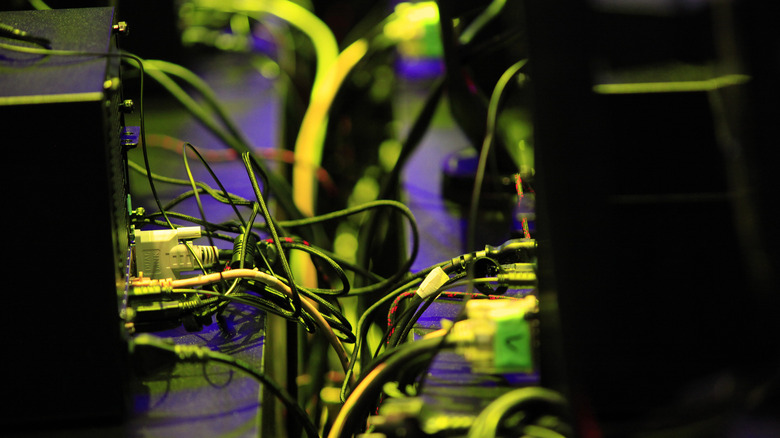5 Common PC Building Mistakes To Avoid At All Costs
We may receive a commission on purchases made from links.
Buying a PC is an exciting time, but building it yourself is, arguably, even more thrilling. You get to pick out the parts and assemble them, watching your computer come to life from scratch. It takes time and research but is an extremely rewarding process. Unfortunately, it can also get pretty stressful, as you're often handling parts that are worth hundreds of dollars. Some of the best graphics cards from Nvidia can cost as much as $2,000 — no one wants to mess with that!
With that said, there's nothing to be afraid of. There are plenty of useful tutorials on how to build a PC to be found online, and following them closely and taking your time is a surefire way to success. Building PCs gets easier over time, too.
But there are some common mistakes that you'll want to avoid. Builders often have to deal with incompatible or poorly-matched parts, but the actual building process comes with its own pitfalls. Installing the components the wrong way, such as the dreaded IO shield or the CPU, applying too much thermal paste, or poor cable management can all end in disaster. Don't worry, though — we're here to help. Check out some of the mistakes many PC builders have made and learn from them so that you can avoid them in your own build.
Incompatible parts
This is done before the building process ever begins, but it can be disastrous if not done correctly. Picking out PC parts is fun on paper, but one tiny oversight can lead to an incompatibility — and even if the parts will work, they might not work well together.
The most common examples of this are motherboards, processors, and coolers, but those three components can lead to further incompatibilities, such as with the SSD or the graphics card. That's why, when assembling your part list, it's good to use a tool like PCPartPicker to check for compatibility. Better yet, read the specs of every component and see if they add up.
Remember that every motherboard only supports one type of CPU socket. In the case of AMD, that'd be the AM5 for AMD Ryzen 7000; for Intel, we're talking about the LGA1700, and that socket supports Alder Lake (12th-Gen) and Raptor Lake (13th-Gen, but also the 14th-Gen Raptor Lake refresh) processors. Trying to use one of those motherboards with a different CPU won't work, and vice versa.
Older motherboards may not support M2 SSDs, which means you'd have an SSD with nowhere to install it. They also may not have enough PCIe lanes or slots for certain bigger graphics cards. Smaller PC cases will not support a larger motherboard, but also huge graphics cards like Nvidia's RTX 4090.
For a quick recap, the easiest way to assemble your components is to pick the CPU and the GPU and go from there. Check for socket compatibility and the number of slots at every step of the way, and consult a professional if you're not sure.
Subpar cooling and power supply
While it's a lot more exciting to snap up a new graphics card, the cooling system and the power supply (PSU) are some of the most important parts of your PC. These are the components you should never go cheap on. If your PC doesn't receive plenty of power and cooling, it may become prone to instability, be it thermal throttling or straight-up crashing.
When it comes to cooling, many choose to rely on the stock cooler that comes with the processor. This can be a viable option, but be mindful that not all CPUs even come with a cooler, so that's the first thing to check. CPU models that are closer to the midrange and above need a dedicated cooler made by a reputable brand, not just their stock cooler. This is when compatibility comes into question — will this cooler fit inside your case and will it suffice for your PC?
If you're shopping for the latest hardware and hoping to overclock it down the road, a fan won't be enough, either. At that point, your best bet is an all-in-one (AIO) cooler, which combines the pump, radiator, and fans into a single unit for simplified installation and enhanced cooling efficiency compared to traditional air coolers.
The PSU marks another commonly overlooked component. While it's tempting to save money here, remember: the PSU is powering every part of your machine. It's not just about wattage either; efficiency, durability, and the quality of power delivery are crucial. Always make sure to pick a slightly better PSU than what you need — Newegg, for instance, has a good calculator to help you decide. For pricier builds, we recommend picking out a Gold or Platinum-rated PSU.
Low quality/reused components
Let's face it — most of us don't have an endless budget for building a PC, so it makes sense that you might want to buy parts secondhand or choose a far lesser-known manufacturer instead of paying a premium for top brands like Asus, MSI, or Gigabyte. However, be wary that this comes with its own pitfalls and it might end up costing you more money in the long run.
Motherboards, for instance. Buying a mobo that wasn't made by one of the major motherboard brands can be a risky endeavor. Some of them might lack essential safety features like overvoltage protection; they also have fewer PCIe lanes and slots, so you're limited in terms of storage (or even graphics card size).
Graphics cards often end up on the second-hand market, but they're also a tricky purchase when already used or refurbished. In the last few years, cards that were previously used for cryptomining flooded the market. While cryptomining is much less widespread now, those GPUs are still out there, being sold at a discount. While some of them are fine to use, others may arrive in poor shape after years of overheating and pushing the VRAM to the limit.
Whether you're buying new or used components, it's important to make sure they're high-quality. Research is an important factor. Contact the seller to prove the performance and stability of the component, read reviews about it from trustworthy sources, and be ready to spend a little bit more on a brand-new piece of hardware if it can keep your PC running smoothly.
The CPU and the I/O shield
If the CPU is the heart of your computer, the motherboard is its backbone, interconnecting all the other components and allowing them to communicate. Needless to say, both are crucial, so installing them correctly is a significant concern for first-time PC builders. Here are some things to be mindful of.
While installing the CPU is generally straightforward, remember to always hold the chip by its edges. You don't want any fingerprints or oils on the surface of the chip, as they can interfere with conductivity. Misalignment is another common problem that can lead to bent pins or improper contact, permanently damaging your CPU and causing your system to be unable to boot. To avoid that, always look for the golden triangle mark on both the CPU and the motherboard to ensure that you're installing it correctly. Moreover, if the CPU is seated correctly, you won't need to use any force — it'll slot in position with ease, so don't push if you feel resistance.
The input/output (I/O) shield is the small plate that comes with your motherboard, and it's infamously annoying to install on certain models. To avoid trouble, make sure to pre-fit the shield before you even attach the motherboard — simply snap it into the case's cut-out and ensure that all tabs are aligned with their respective ports. Be mindful of the tabs, because they can get into the ports during the motherboard installation; check to make sure they're not blocking them.
Installing certain components incorrectly
Outside of the CPU and the I/O shield, PC builders need to watch out for various things while installing other components, too. One example of this is the graphics card (GPU). When improperly seated, it might not be secure enough, and if the connectors aren't pushed all the way in, a power surge might fry the connector (or the port on either side). This has been the case with Nvidia's RTX 4090. The way to avoid this is to install your GPU so that it sits snugly in place, without forcing it, and make sure to push the connectors until you hear a click. Do not bend the cable — on the RTX 4090, the 12VHPWR connector can cause problems when bent.
The next thing to consider is your coolers. Common mistakes include forgetting to remove the plastic film from the cooler base or using too much or too little thermal paste on the processor. Don't forget to make sure that you've positioned the cooler correctly because having it face the wrong way around will have a negative impact on your PC cooling. In AIO coolers, verify that the pump and the fans are connected to the right motherboard headers.
Cable management is a big one, and it's not all about clean aesthetics. Having a mess of cables impacts the airflow and accelerates dust accumulation. In addition to using zip ties or velcro straps, remember to avoid running cables over hot components like the GPU or near fan blades. It also helps to watch a tutorial before getting started.
